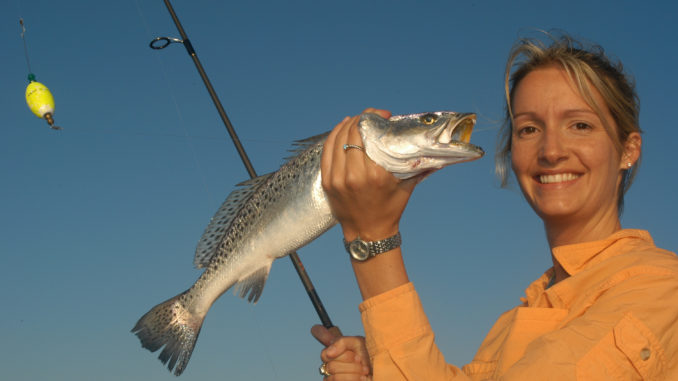
‘We feel they are safe,’ official says
Public officials say concerns about anglers eating seafood are driving fishing closures following the BP oil spill, but not one of the thousands of fish, shellfish, water or sediment samples collected across coastal Louisiana has revealed any contamination, LouisianaSportsman.com has learned.
“The samples have shown no contaminated tissue,” Louisiana Department of Environmental Quality’s Jeff Dauzat said. “We feel they are safe (to eat), but testing will continue.
“Preliminary numbers are telling us (fish and shellfish) are not toxic, but there’s still a lot of science that needs to be done.”
Dauzat and Louisiana Department of Wildlife and Fisheries’ Karen Foote said there have been hundreds of tissue samples collected both inside and outside of closed areas in an effort to ensure there are no health threats. In addition, thousands of air, water and sediment samples have been taken.
“Our results have come back as ‘non-detectable levels’” of contamination, Foote said of the more than 100 tissue samples her office alone has collected.
LDWF, DEQ and the Department of Health and Hospitals are working together to gather samples for testing at a Metairie lab, Dauzat said. DHH did not respond to an interview request.
Samples of finfish, shellfish and oysters are collected through the use of trawls, dredges, gill nets and seines, Foote said. Some of the samples are part of the standard work with which department personnel are tasked, but Foote said there also is a major effort to supplement that sampling from waters that are closed because of oil.
“We’re sampling these (closed) areas at least once a week, sometimes more,” Foote said.
The consistent test results call into question the continued closures, but Foote said the closures still are necessary to be certain there are no dangers to anglers.
“It takes five days to turn around sample testing,” Foote said. “We may get the sample back (from the field) at 5 o’clock that evening, and we have to get it to the lab, which may be closed for the day.
This accounts for the current LDWF policy of closing water whenever there are confirmed reports of oil in a specific area, and leaving that closure in place for seven days.
And Dauzat said the black, red and brown goopy surface oil that is hitting Louisiana beaches and spreading into the marshes does pose dangers of contamination, but prolonged weather offshore has lessened the dangers through evaporation.
“The majority of the volatile organisms have long burned off, so the initial toxicity is significantly lower than when it popped to the surface,” he said. “That oil has been floating around out there for a month, so the toxicity is much less than if (the spill) had happened inshore.”
Of course, oil isn’t the only source of anxiety for managers. Officials also have some concern about Corexit – the dispersant that has been used in huge quantities.
In fact, LDWF Secretary Robert Barham has pointed to the unknowns surrounding Corexit to justify fishing closures versus issuing consumption advisories.
“There is no published (consumption) tolerance for Corexit in mixture with hydrocarbons,” Barham said during a previous LouisianaSportsman.com interview. “Until the EPA gives us the tolerance levels for consumption of Corexit, we cannot risk the public threat.”
However, initial testing indicates Corexit might not be a major concern.
“The samples within the plume (of dispersed oil) indicate the contaminants within the plumes are below the Louisiana RECAP standards for drinking water,” Dauzat said. “If it were not saltwater, it would be safe to drink.
“The saltwater would be more toxic than the dispersed oil.”
RECAP stands for Risk Evaluation/Corrective Action Program, and is the gold standard used by the DEQ to determine if water is safe for consumption.
Dauzat said oil is broken into microscopic molecules when contacted by the dispersant, a process which allows microbes in the water column to efficiently break down any contaminants.
“Basically it’s a soap,” he explained. “The analogy is using Dawn detergent on a lasagna pan.”
Despite a recent video by Philip Cousteau that was reported to show a large, visible plume of dispersed oil 25 feet below the surface, Dauzat said dispersed oil actually is invisible to the naked eye.
“A half mile from the (subsea) dispersal site, you can’t see any dispersed oil without the use of (special) equipment,” Dauzat said. “Basically, it’s broken down to the molecular level.”
That said, Dauzat said his agency still has concerns about long-term impacts of Corexit, and that’s why the ingredient list of the dispersant has been requested from manufacturer Nalco.
“They are reluctant to turn that over to us because they have a patent on (Corexit),” he said. “It would be just like Tony Chachere’s would be reluctant to give us their recipe for their seasoning.”
Dauzat said his agency is willing to sign a confidentiality agreement to get the list of ingredients so testing can be targeted appropriately.
“We need that makeup of Corexit so we can develop markers for testing,” he said.
However, he said dispersant concerns are mainly an offshore issue.
“Our main focus isn’t dispersants inshore,” Dauzat said. “We don’t have any hits (indicating) that we have any dispersed oil in our sampling areas.”
There are some concerns about what happens if the millions of gallons of dispersed oil begin flowing into the marshes, however.
“The unknown is really what is going to be the future of the dispersed oil?” Dauzat said. “The surface oil can be cleaned up, but you can’t clean up the dispersed oil.”
But the bottom line at this point is that there is no evidence that any of Louisiana’s seafood has been contaminated.
“At this point, we just haven’t gotten a hit on anything,” Dauzat said. “There is no concern with eating those samples.”